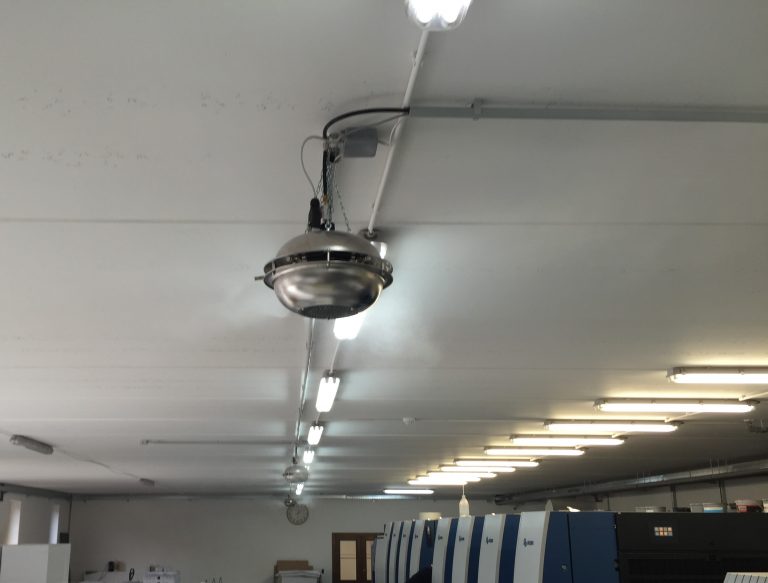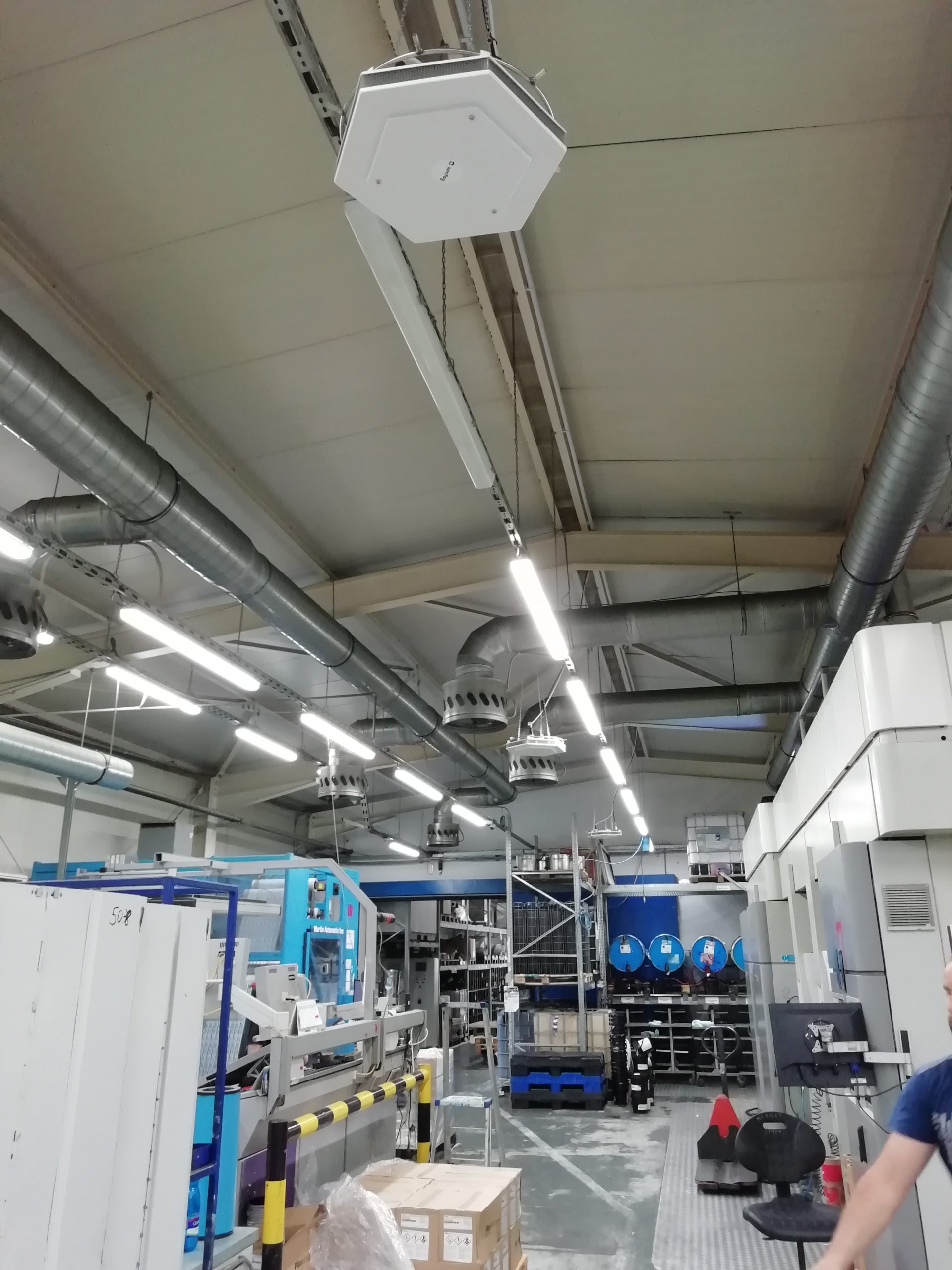Constant and optimal humidity is an important factor for high print quality and a smooth production process. Especially in the winter months when humidity drops to critical values in the printers and can have negative consequences such as: change of default format, static discharges, limited production or in the worst case the production process stops completely.
Why humidification is important

Moisture plays a big role in the printer and in paper processing, mainly due to the sensitivity of large paper rolls. Fine paper fibers are very sensitive to too high or too low humidity. The resulting surface changes in automatic processing on production lines can result in dimensional changes and consequently stoppage of the production line. But not only the thickness and quality of the material being processed can be related to production stoppages, but also low moisture levels cause the fibres to become brittle and cracked, this causes material damage and loss of time which ultimately affects profitability.
Generally when handling paper the rule of thumb is that at higher humidity, the paper is less sensitive and therefore the processing can go faster. Two other main reasons why you should install humidity control equipment are better results and avoiding static electricity – using humidifiers can guarantee higher quality and a smoother production process.
Paper is a natural hygroscopic material, which means it is very sensitive to relative humidity (RH). For optimum printing and storage conditions, humidity between 50 and 60% RH is adjusted.
When humidity is low, especially during colder periods, the heat generated by the machines and the heating of the air can dry out the air.
The dry air draws moisture from the surface of the paper, shrinking the outer layers of the paper while leaving the original moisture content of the inner layers unchanged, causing the edges to shrink and the paper to curl.
The size of the paper changes with changes in moisture content. This can result in distortion of colours. Printing errors are more likely if two or more paper dyes are running and the change in size can lead to printing problems, no matter how small the paper changes are.
When relative humidity is below 40% RH, electrostatics can increase. This results in stuck sheets of paper, jammed sheets that don’t lay exactly on top of each other, or sheets that don’t stack properly when they come off the press.
If the storage areas of a newspaper printer, which handle large sheets of paper, are not properly humidified the paper rolls can dry out. Considering that the paper is processed quickly, the edges of the paper can become dry, unlike the center of the paper where the edges are very sensitive and most likely to cause malfunctions.
What are the benefits for printers:
- Higher production speed
- No paper wrinkling
- No electrostatics in the premises
- Less dust
- Less waste
- Consistent quality
- Comfortable indoor climate
- Fewer health problems

